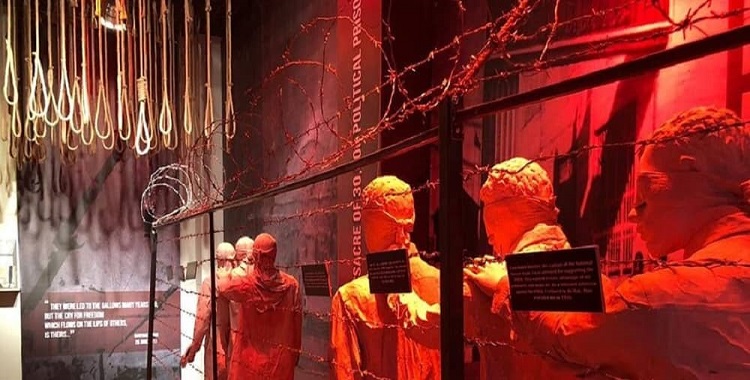The 1988 Massacre of Political Prisoners in Iran: Eyewitness Accounts

Written by
The Editorial Board
The following video clips are a series of eyewitness accounts from men and women who survived the 1988 massacre of 30,000 political prisoners, most of whom were affiliated with the main Iranian opposition movement, the Mujahedin-e Khalq (PMOI/MEK).
International human rights organizations have called this massacre the greatest case of “crimes against humanity” since World War II.
The eyewitness accounts will reveal the barbarity of the Iranian regime in harrowing detail. At the same time, these testimonials will vividly demonstrate a generation’s unbreakable resolve to neither abandon their ideals nor submit to the hated mullahs despite the heavy cost.
Even after 33 years, families of the victims have not received death certificates or information on the manner in which their loved ones were murdered or what was done with their bodies.
These prisoners—none of whom had been sentenced to death—were executed based on a 1988 fatwa issued by the then-supreme leader Ruhollah Khomeini.
“As the treacherous Monafeqin [Mojahedin] do not believe in Islam and what they say is out of deception and hypocrisy… and as they are waging war on God …. and as they are tied to the World Arrogance, and in light of their cowardly blows to the Islamic Republic since its inception, it is decreed that those who are in prisons throughout the country and remain steadfast in their support for the Monafeqin (Hypocrites) [Mojahedin (MEK)], are waging war on God and are condemned to execution,” Khomeini wrote. He urged the regime to carry out his order with “no mercy.”
“Death commissions,” were established in every province to identify prisoners who were suspected of remaining steadfast in their allegiance to the MEK and its ideals of a free, democratic Iran with a duly elected, secular government.
Tens of thousands of prisoners from Evin and Gohardasht prisons were brought before these “death commissions” and usually had their fates determined in just a few minutes. In one case, a 28-year-old man named Mahmoud was brought before a death squad around 7:00 p.m. on July 30, 1988, according to a witness. Mahmoud said he told the death commission “I am a supporter of the MEK.” Around 9:00 p.m., he and a large number of other prisoners were taken to the “death corridor,” where they were lined up and led into execution halls. Mahmoud was hanged that night.
Hamid Noury, a former assistant prosecutor in Iran, is now in Sweden facing criminal charges for his role in the 1988 “killing machine.”
Many of Iran’s current senior officials were also part of the 1988 massacre, according to witnesses. These include Iran’s new President Ebrahim Raisi, who was a member of the Commission in Tehran in 1988; prominent Sharia Judge Hossein Ali Nayyeri; Tehran Prosecutor Morteza Eshraqi; Deputy Minister of Intelligence Mostafa Pour-Mohammadi; and several criminal mullahs such as Ali Mobasheri, Mohammad Moghesiye, Esmail Shushtari, and Ali Razini.

